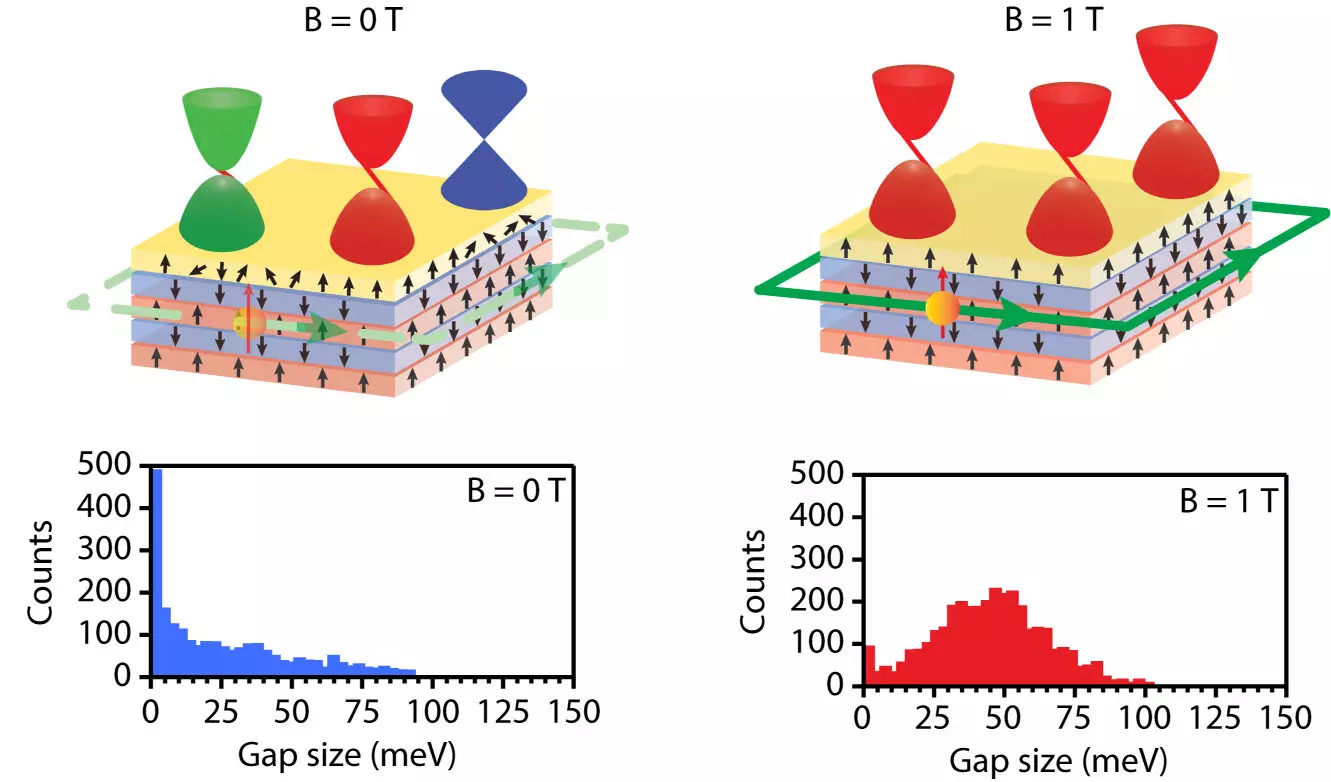The Quantum Anomalous Hall Effect (QAHE) has emerged as a frontier subject in condensed matter physics, characterized by the ability of certain materials to conduct electrical currents without resistance on their edge while exhibiting insulating behavior in the volume. This phenomenon occurs in materials known as quantum anomalous Hall (QAH) insulators, which combine intrinsic magnetism and topological properties. However, exploiting their unique attributes has proven challenging due to the influence of magnetic disorder, which undermines topological protection—the very mechanism that enables the existence of dissipationless edge states.
Magnetic Disorder and Topological Protection
The central challenge in developing applications based on QAH insulators lies in mitigating the effects of magnetic disorder. Studies have indicated that such disorder can lead to a breakdown of the topological protection, allowing for the degradation of the desirable conductive states. Recent research published in *Advanced Materials* by a team led by Monash University provides crucial insights into this phenomenon, particularly in the context of the intrinsic magnetic topological insulator MnBi2Te4. The authors, including Ph.D. candidate Qile Li, highlight the ways in which the breakdown of topological protection can be analyzed and potentially restored through the application of magnetic fields.
Intrinsic magnetic topological insulators, like MnBi2Te4, present themselves as a promising upgrade to traditional, magnetically doped models. The intrinsic magnetism of these materials provides a stable platform that has the potential to sustain QAHE at elevated temperatures. Whereas magnetically doped topological insulators face a pronounced decline in performance above 1 Kelvin, preliminary findings suggest that the QAHE in MnBi2Te4 can endure up to 1.4 Kelvin, with possibilities of reaching 6.5 Kelvin when subjected to stabilizing magnetic fields. Still, this is notably below the theoretical limit of 25 Kelvin, indicating that further research is necessary to unlock their full potential.
Investigating the Mechanics Behind Topological Breakdown
To investigate the mechanisms leading to the breakdown of topological protection, Li and their team employed an innovative approach using low-temperature scanning tunneling microscopy and spectroscopy (STM/STS). This technique facilitated direct, atomically resolved measurements of the interplay between surface disorder, local bandgap variations, and chiral edge states in the ultra-thin five-layer films of MnBi2Te4. Such detailed characterization allows for a more profound comprehension of how defects and fluctuations in bandgap energy correlate with the QAHE.
The research exposed critical insights: fluctuations in the bandgap energy ranged broadly from gapless to a significant 70 meV. Notably, these fluctuations were not uniformly tied to surface defects, hinting at complex underlying processes that impact the electronic properties of the material.
A particularly intriguing aspect of this study is the discovery that low magnetic fields can mitigate the adverse effects of magnetic disorder, effectively restoring the QAHE. These findings confirm the hypothesis that by applying magnetic fields—well below the material’s spin-flop transition—researchers can enhance the average exchange gap, bringing it closer to the anticipated values derived from theoretical models. Understanding this decoupling between the gapless edge states and conductive bulk regions is pivotal for envisioning practical applications of QAH insulators in future electronic systems.
The insights gained from this research not only unravel the complexities of topological protection breakdown but also open avenues for advancing low-energy topological electronics. By refining our understanding of the effects of magnetic disorder and how it interacts with quantum states, we can pave the way toward exploiting the distinctive characteristics of materials like MnBi2Te4.
As researchers continue to probe the interactions between topology and magnetism, it becomes apparent that the future of quantum electronic devices heavily depends upon overcoming magnetic disorder. The persistent quest to elevate operational temperatures of QAHE materials will be key in bringing these fascinating quantum phenomena from the laboratory to functional technological applications.

